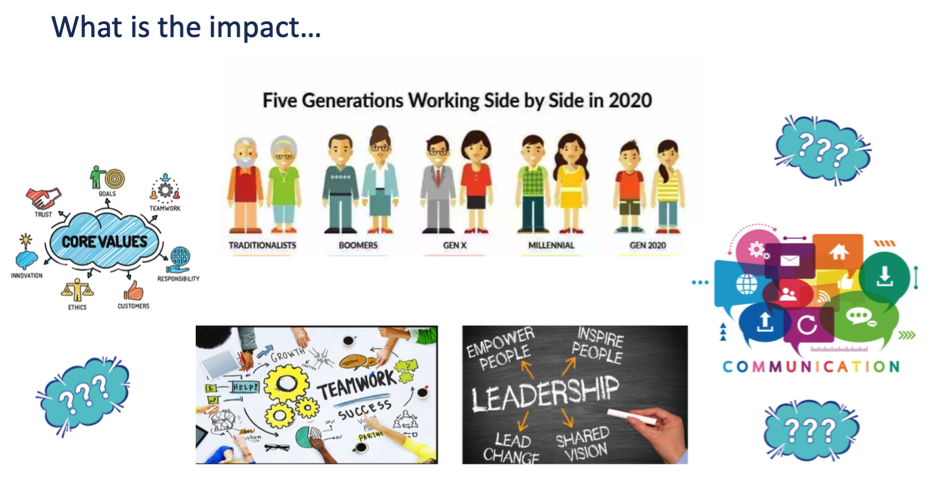Five generations in the workplace

By Ramona Naidoo
Organisational diversity is expanding. In addition to diversity of gender, race, cultures, and religious backgrounds there is another ingredient being simmered in this already diverse melting pot: the generational factor. Even if I look at my current work environment, despite being a small organisation, we already span over four generational groups.
With the accumulation of all the generations, and their nuances, all in one work environment, how do organisations ensure productivity, or performance or even at a fundamental level — a gelling of the generations? What is the impact of a multi-generational workforce have on communication methods, leadership approach, or on teamwork? In this multigenerational South African exploration, we will attempt to identify the impact generational groups may have on their work environment to determine if differences exist, as well as if these are real or if these nuances are just perceived.

A generation is typically defined as people from a similar age group who have or will experience similar life events that are likely to shape their lives and the way they think. For the purpose of the research we will be focused on Gen X, Gen Y and Gen Z. It is important to note that there is no one universally accepted generational bracket. There is also no exact science for determining generational age groups. For the purpose of this research Gen Z is anyone 24 years and younger; we only had data for 18 to 24-year-olds. Gen Y will be the 25- to 38-year-old bracket and Gen X will be the 39- to 54-year-old bracket. The total sample was just over 29 000 people.
Evalex research key findings
- Traditional cognitive reasoning appears less determined by generation.
- Contextual reasoning (situational judgement) did show a small, statistically significant effect, indicating that the generational group may have an impact (small) on the appropriateness of judgement calls.
- Gen X – appears more inclined to leadership, taking charge and being assertive. Gen X showed an interest toward coaching roles. These findings were statistically supported with a small effect size.
- Gen Y – defined themselves as more conscientious and slightly more inclined to analytical roles. They seemed as quality orientated as Gen Z, though none of these were statistically supported.
- Gen Z – tends to associate themselves with being affiliative and goal driven. Statistically, they are likely more inclined to personal growth or learning and following through on tasks, with an interest toward numerical tasks.
- Though eight out of nine value dimensions did have statistically significant group differences, none were even of a small effect size, implying that when comparing the values across generational groups, they are less impacted by generation.
Conclusion
- Statistically significant differences were identified between groups on personality, work styles and interests. Similar to previous research, this research can conclude that while (few) statistically significant generational differences do exist, their effect size is generally small, implying that generational group has little impact on the variables measured.
- Drawing on previous Evalex research, the differences identified may be less a result of generation or even age, but may be a result of the job level and the requirements of the job.
- The research confirmed that while many significant differences do exist, there are no statistically big differences between the generation groups and therefore the differences that do exist are likely perceived, or at the very least, a result of more than just generation.